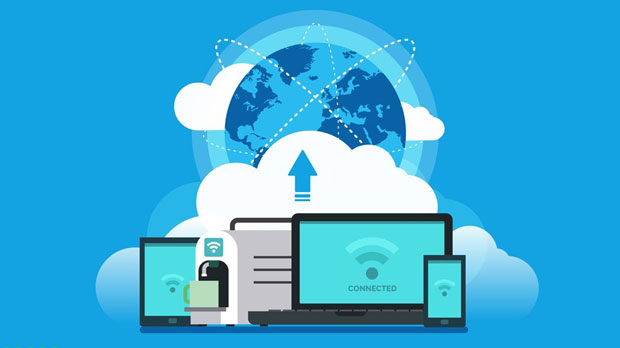In the modern digital landscape, automated web crawlers have become essential tools for data collection, competitive analysis, and business intelligence. However, the growing sophistication of websites' anti-bot measures poses a significant challenge for businesses relying on web scraping techniques. static ISP proxies emerge as a crucial solution in this context. Unlike traditional proxies, static ISP proxies provide a stable, residential IP address associated with real Internet Service Providers (ISPs). This consistency offers multiple advantages, including better security, reliability, and a higher success rate in bypassing anti-scraping mechanisms. In this article, we will explore why static ISP proxies are indispensable in the era of automated web crawlers, offering both strategic and technical insights into their importance. Understanding Static ISP ProxiesTo grasp the significance of static ISP proxies, it’s important first to understand what they are and how they differ from other types of proxies. Traditional proxies are often characterized by rotating IPs, meaning the proxy server constantly changes its IP address as requests are made. While this can help mask the origin of the traffic, it also increases the risk of detection by anti-scraping technologies. Static ISP proxies, on the other hand, are tied to a fixed IP address provided by a real Internet Service Provider. This consistency mimics the behavior of a typical user, making it more difficult for websites to identify and block such traffic as bots.The fixed nature of static ISP proxies ensures that each request sent through the proxy uses the same IP address, which can be crucial when the website’s anti-scraping measures include blocking IP addresses that exhibit suspicious behavior such as frequent requests in a short amount of time. Static ISP proxies, therefore, offer a more "natural" browsing pattern, increasing the chances of the crawlers accessing the data without being flagged as bots.The Role of Static ISP Proxies in Web Scraping AutomationAutomated web scraping, the process of using bots to extract large amounts of data from websites, plays a vital role in industries like market research, SEO analysis, and competitive intelligence. However, as more businesses leverage web crawlers, websites have become increasingly aggressive in their defense against unwanted automated traffic. Various mechanisms, such as CAPTCHA tests, rate limiting, and IP blocking, are used to deter scraping bots.Static ISP proxies can significantly enhance the performance of web crawlers by addressing these challenges. By utilizing a fixed, legitimate residential IP address, web crawlers appear as regular users to the target websites, making it harder for anti-scraping systems to detect and block them. Furthermore, static ISP proxies offer the stability required for scraping operations that span long periods, such as data collection for market trends or monitoring competitors’ websites. This consistency reduces the likelihood of being blocked due to changing IPs.Benefits of Static ISP Proxies in Web Crawling1. Bypassing Geo-blocking and Content Restrictions: Many websites impose regional restrictions or geo-blocking to control access to their content. Static ISP proxies allow crawlers to appear as though they are browsing from a specific geographic location, which is invaluable for scraping data from region-specific sites or accessing location-restricted content.2. Minimizing Detection and Blocking Risks: Websites often use sophisticated techniques to identify bot traffic, including analyzing IP address patterns, request frequencies, and behaviors. Static ISP proxies reduce the likelihood of detection by mimicking the characteristics of a typical user’s browsing activity. As these proxies come from real ISPs, they appear legitimate, which helps avoid being flagged as a bot.3. Improved Success Rates in Large-Scale Crawling: For businesses involved in large-scale data collection, maintaining the continuity of web scraping operations is crucial. Static ISP proxies ensure that the crawlers can continue collecting data without facing frequent disruptions due to IP bans or CAPTCHAs, improving the overall efficiency of the scraping process.4. Enhanced Reliability for Long-Term Scraping Projects: Unlike rotating proxies, static ISP proxies do not change over time. This makes them ideal for long-term projects that require a continuous stream of data. Static IPs ensure that web crawlers are not disconnected or flagged due to inconsistent IP changes, which is common with dynamic proxies.Strategic Value for Businesses and Data Collection ProjectsIn the context of automated web scraping, the use of static ISP proxies is not just a technical necessity but a strategic advantage. Businesses that rely on accurate and real-time data for decision-making can greatly benefit from the stability and reliability that static ISP proxies offer. For example, in industries such as e-commerce, finance, or digital marketing, staying ahead of competitors is crucial. Using static ISP proxies ensures that scraping operations are conducted smoothly and without interruptions, allowing businesses to gather the data they need to stay competitive.Moreover, static ISP proxies are particularly valuable in sectors where accurate data collection over extended periods is required. In market research, for example, the ability to track changes in product prices, consumer reviews, or competitor strategies across multiple platforms is vital. Static ISP proxies help ensure the continuity and consistency of these tracking efforts without triggering anti-scraping measures that could otherwise disrupt the process.Conclusion: Static ISP Proxies as a Critical Asset in the Era of Automated CrawlingAs automated web scraping becomes more prevalent, the challenges associated with bypassing anti-scraping mechanisms have grown increasingly complex. Static ISP proxies provide an effective solution to these challenges by offering stable, residential IP addresses that mimic the behavior of real users. Their ability to reduce detection risks, improve scraping success rates, and ensure reliable long-term operations makes them an indispensable tool for businesses relying on web crawlers.Whether for competitive analysis, market research, or content monitoring, static ISP proxies provide the foundation for successful and efficient automated data collection. As businesses strive to stay ahead in the competitive digital landscape, leveraging static ISP proxies will be key to unlocking the full potential of web scraping and achieving a data-driven edge in the market.In conclusion, static ISP proxies offer both technical and strategic benefits, making them a must-have for any organization utilizing automated web crawlers. Their ability to bypass detection, ensure reliability, and maintain long-term scraping operations ensures that businesses can collect data efficiently and effectively in a world increasingly dominated by anti-bot measures.
Nov 14, 2025



































































